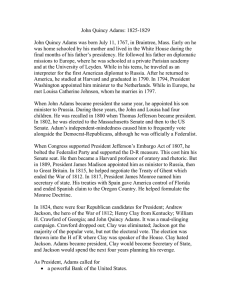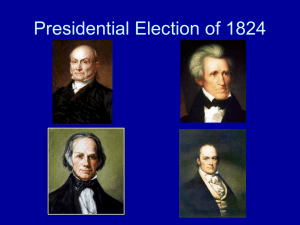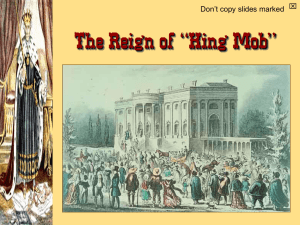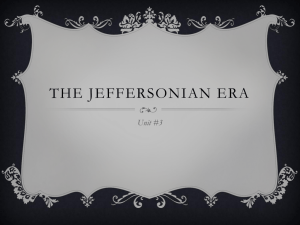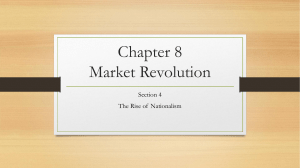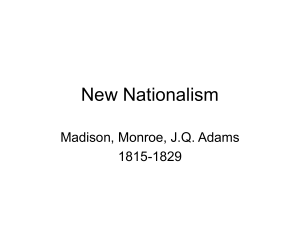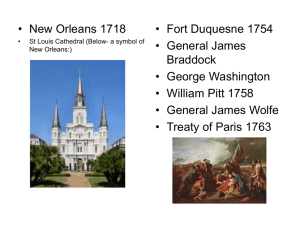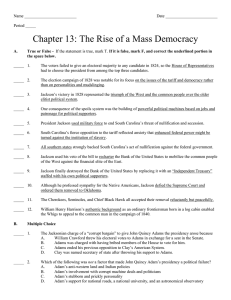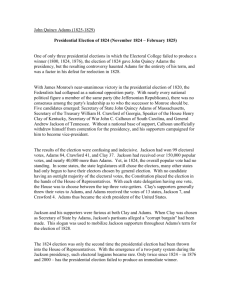John Quincy Adams 1824-1828
advertisement
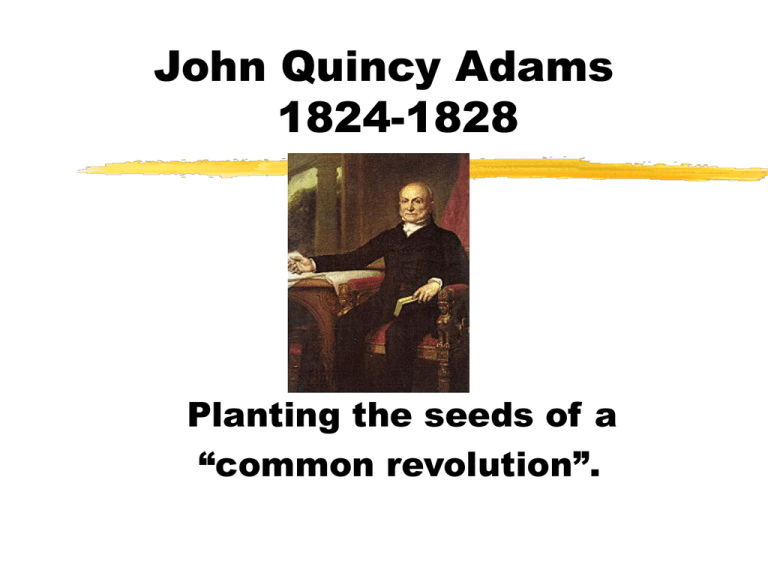
John Quincy Adams 1824-1828 Planting the seeds of a “common revolution”. Democracy to most Defining the period. ? Political trends. Impact of sectionalism. “Down with King Caucus” Election of 1824 Nationalism is being replaced by sectionalism. Mainly brought out by ????? Sectional candidates: Adams _________, Crawford __________, Clay and Jackson ________. All were Democratic-Republicans. The electorate voted along sectional lines. Popular vote: Election of 1824 160000 140000 120000 100000 Jackson Adams Crawford Clay 80000 60000 40000 20000 0 1st Qtr Poular vote Popular and % Popular percentage Jackson Adams Crawford Clay Electoral vote 100 90 80 70 60 50 40 30 20 10 0 A “corrupt bargain”? Plurality v. majority. Jackson led in both electoral votes and popular votes. House of Representatives had to decide the winner between the top three. A hint of scandal: Does Clay support Adams in return for the Secretary of States’ chair? Impact Adams wins, but bitter resentment is felt nationwide at the perceived injustice. Time for a new two-party system: National-Republicans, later called Whigs. Led by Clay, Adams, and later, Daniel Webster. Support: mainly from bankers, merchants, manufacturers, and large landowners. New parties National Republicans Stance: Strong federal government. A national bank. Protective tariff. Favored the interests of business. Who’s party does this resemble? _____???? Democrats Led by Jackson and Martin Van Buren. Supported by: small farmers, newly emerging businessmen, and city workers. (common folk) Stance: Generally opposed an all-powerful national government. Urged greater democracy. Claimed to represent the common man. Election of

